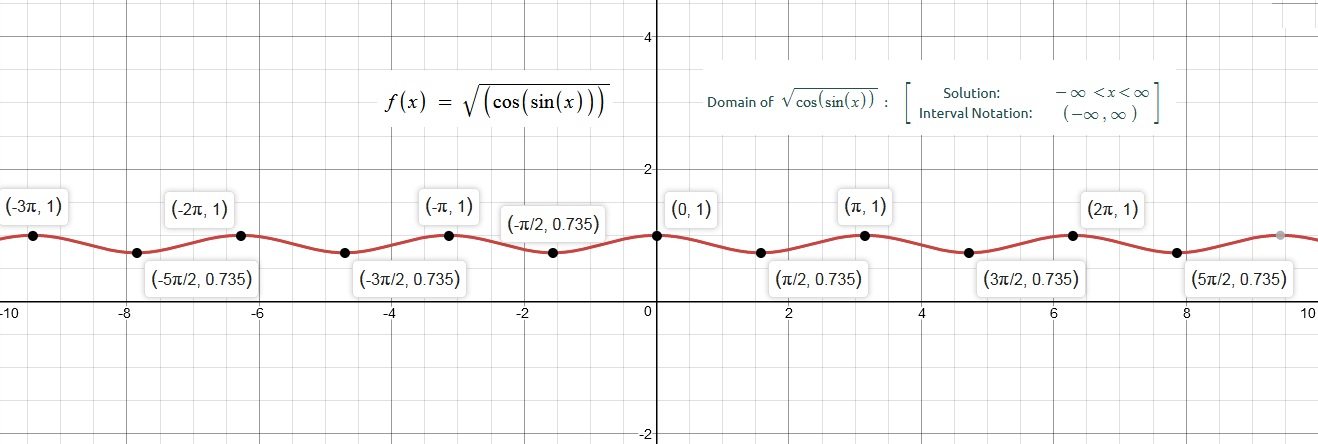What is the domain of #f(x) = sqrt[cos(sinx)]#?
2 Answers
all real numbers (
Explanation:
treat this as a composition of functions:
outer function:
middle function:
inner function:
work from outer function to inner:
for a value of x to produce a real output, the value in the
for
this means
now, the only restriction is that
so the domain is all real numbers (
We have our radical function given to us:
The domain is
Using the Interval Notations
Explanation:
We have our radical function given to us:
Please refer to the graph of this radical function below:

When we analyze the graph above, we observe that the given radical function does not have any undefined points and we also observe that three are no domain constraints.
Therefore,
The domain is
Using the Interval Notations we can write our domain as


